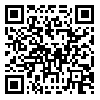BibTeX | RIS | EndNote | Medlars | ProCite | Reference Manager | RefWorks
Send citation to:
URL: http://hii.khu.ac.ir/article-1-2489-en.html
Background and Aim: This study attempted to investigate the information-seeking process of Shahid Chamran University postgraduate students, and how they use various information sources. The research also investigated he role of demographic characteristics in students' information-seeking process, as well as the problems and barriers they encounter in the process.
Method: The population of the study consisted of 5000 postgraduate students among whom 298 students were randomly selected through classified ratio sampling method. A researcher-made questionnaire was developed and after measuring its validity and reliability, distributed among the sample in person. To analyze the data, descriptive statistics as well as inferential statistics including Friedman Rank Test and MANOVA were applied.
Results: The results show that students were statistically different in some variables. On average, students use the Internet 25.11 hours per week. They also prefer to use electronic, print, and human information sources, respectively, both to meet their information needs and to update their information. Students believe that information and communication technologies have reduced their visits to libraries. Students seek help from librarians primarily to locate books and other documents and to search for information. Students encounter a range of problems and barriers in their information-seeking process; the most important being the scattered information. Females face more problems than males. While students refer to specialists to meet their information needs at the first stage, they refer to their classmates and friends at the first stage to update their information.
Conclusion: Despite the effects of new technologies on students’ presence in academic libraries, all types of information resources are still consulted by them. Various purposes for information-seeking determine the information resource being consulted, and students consider their information needs as well as the context in which they seek information, when decide to choose the information resources
| Rights and permissions | |
 | This work is licensed under a Creative Commons Attribution-NonCommercial 4.0 International License. |






